- All
- Art in Context
- Basisjaar
- Beeld en Taal
- Beeldende Kunst
- Buro Rietveld
- DOGtime Basisjaar 1
- DOGtime Basisjaar 2
- DOGtime Beeldende Kunst
- DOGtime ID UM
- DesignLAB
- Edelsmeden
- Eight Cubic Meters
- Fotografie
- GRA AWARDS
- GRA Award Residency
- Glas
- Graduation 2012
- Graduation 2013
- Graduation 2014
- Graduation Show 2015
- Grafisch Ontwerpen
- Keramiek
- Lectoraat
- Library
- Meet our students
- Mode
- Nassau Ateliers
- Orientatiejaar
- Preparatory Course
- Public Rietveld
- Publications
- RadioRietveld
- Reizende Academie
- Research Residence
- Rietveld Pavilion
- Rietveld Remote
- Rietveld Society
- RietveldTV
- RietveldTV_123
- Sandberg Instituut
- Shop
- Studium Generale
- The Fashion Show
- The Fashion Show 2016
- TxT (Textiel)
- VAV
- Vooropleiding Aruba
- Vooropleidingsjaar
- Werkplaatsen
- do it yourself week
- inter architecture
Projecten
De Beamclub
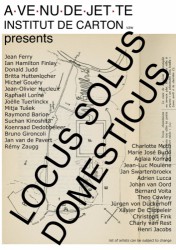
2012-12-13 12:37:39
The making of
2012-10-17 10:26:48
Dear public,
You have to excuse me (and not only for my bad English) but also because I was writing, the last few days, I mean: the real writing, the deep writing, the unending writing with fever and almost without conscience,... Yes, I was in the middle of the making of a book. And the world? Oh, the world was far away, taking place miles outside my window. I was not part of it. Neither did I noticed the time.
According the plan, the book had to be finished by June. (So, that is before the summer) And look at me. (It is already autumn)
When you are in such a situation, there are moments you think: (Is there life after the deadline?) but also:
What is the use of a plan or a time-schedule for a writer - if you get so easy out of control, or what’s the use of it for an artist, because the guests today are all artists. I admit, writers feel at some holy moments that they are artists too. Not if they pass the deadline, I can tell you. Not if they have to think about the making of in the middle of a making of. It is a sort of meta-thinking that makes you dizzy.
It is also the subject of today that makes dizzy. Because the making of is THE essential thing, the smallest thing, the thing where everything starts, but it is also the - let me say - the EVERYTHING. If you skip the notion of making, there is not a conversation about art left. Even for a trouvaille or a ready-made where the making of can be very very short, there is a maker and a making of.
So. When I was thinking the last days to pick at least some moment in the process of making to talk about, I was hesitating.
The making of includes a lot of notions: very practical notions like a SPACE; that can be a room, a working-place, the desert, the street,... or the need of MATERIAL; wood, clay, glass, words, notes or an instrument, but before that all, there is first of all: you, the MAKER: your hands, your mind, your hart, maybe your whole life but also in a sense - already there, sometimes before the first moment - let me say: the PUBLIC.
But when I am summing up all this I forget something: I said: we have in the making of not one subject but more subjects: space, material, the maker, even the public,
I did not mention the underlying notion of TIME. Ah, THE NOTION OF TIME For me it is one of the most beautiful and worryful relationships in the making of.
The German philosopher Imannuel Kant said that our human world is first constructed by Space and Time, there is no escape, it is like glasses we have from birth to dead and where through we look to the world, there is no world without. SPACE AND TIME
And I know, the notion of SPACE became very importing in all the discussions about Modern art in last century and even until now, and it became essential in the making of, for instance: think again about a ready-made, but most of al, later on: think about the transformation of a ordinary thing that is set in a museum-place.
It is a pity. About the notion of TIME you read less in theoretical study’s about art.
Then you have to read for instance psychological studies (like complex brain-studies, or the poetic cases as Oliver Sacks writes them). Or worse: you have to read metaphysical studies (and you can start with the philosopher en church-father Augustine; “If you do not ask me what time is, I know it; if you ask me, I do not know.”). Or you can start even more scientific and look for articles about Time Science and read fascinating articles like: How to Escape from a Black Hole?
Maybe If you want an idea to start with, it is better to ask or to look to the artist himself.
Like today. I am only the speaker in the beginning of the evening but I give you already a few images as a result of my looking to artists.
Oh look. In the good moments.There is the maker and oh, the time is on his side, and even like le bouquet final in a fireworks, the longing moment where he forgets the time and there is only the making left. The artist who experienced this, he knows: it is a very peculiar moment, you can even call it a holy or a drunk moment full of inspiration where the maker can think: Yes, I can do it, and even in this moment full of fever and exaggeration: this is the meaning of art, or wait, I can even touch the meaning of life. Or look. In the bad moments. The maker and oh no, the time who is running away from him, in a long distance before him, or just the opposite: the time who is only lingers on and stay behind, and then the artist has the feeling that time is only his enemy. That is the moment where an artist can think: No, I cannot do it, maybe it is time to do something else, whatever.
When we concentrate more theoretically on time in the making of - and that of course with the maker in our head, you have to talk about the BEGINNING and the ENDING.
Every work of art is situated in time. A beautiful desert can be overwhelming, but it is not art. It has no beginning and no ending. There are things in nature you can situate in time, I know, like a spider who makes a astonishing web, but there is more needed. A maker who is self-conscience, conscience of the world and that means also the time, someone who can play with it.
The ENDING is already a complex notion in the making: when is it finished - a statue, a book, a painting - ? ask the artists, they sometimes/often don’t know; but the BEGINNING is also complicated. When you look at the PROCES, and that word process includes already that it is hard to speak of one moment, where is, let’s say, the starting point of the making of? Then you ask also for
The starting shot of the game The crux of the problem The heart of the matter The nucleus of the truth The kernel of the kernel.
Where is it in the time that the work of art take place? (And there you have again space and time.) It is a extensive question, and you have to take more in your range of vision to answer, also very lively real concrete situations.
I give you three situations.
One. Everyone knows the moment where musicians are playing life together and suddenly feels everyone, musicians and public, that there is magic in the air. The composition is already made, maybe a long time before, the musicians played it already hundred times, but there and then - that evening, that moment - IT takes place. Somewhere BETWEEN THE MUSICIANS AND THE PUBLIC.
Two. A painter, he is working, already for days, he has no plan, but he knows that without the stubbornly working, there is even no change that something takes place. He has to work on with confidence, he knows: everything is here: the place, the material, the maker, but it is only at day 26 that the begin of this work takes place. Somewhere BETWEEN THE MATERIAL AND THE MAKER. Three. Maybe the beginning of a work of art lies years before the realization. For this example I go back to my book and myself. You have to know. Before, I was a journalist for a newspaper. I knew the urgency of a deadline. But: I get the task, I wrote it down, it was then like that, the making of was only a question of working, - the courage to start en the will to fulfill the task.) I never was too late. (I admit - the image of a scary empty space in the newspaper helped a lot.)
But now, for years, I am what you can call a writer, And from the moment I start writing a book, and I do it now for the third time, it is quite different. I think, It is like the difference between a carpenter who makes once again the same table or a similar table, and an artist who is creating new work and it can be total new, even to is his own surprise. (Maybe that is one of the real differences between the craftsman and the artist, although in some things there are a lot of similarities.) then I am less in control of the writing itself, and I have at least the feeling that what the writing makes worthwhile, what it makes the text better then me, let me say: the artistic content, it comes often, suddenly, by accident. But more, I noticed, that the beginning of it lies sometimes years after me, and the origin is not me, but the world outside.
What I wanted to say with the three examples is that a lot of times it is hard to point THE moment in the making of.
You can even defend that the artwork takes place at the moment where the public comes in view. In the seeing, hearing, understanding of the spectator. You can here think of the philosopher Gadamer, also German, according who at the very moment of looking, the artwork starts again to exist in his specific way, and that all over again in every new situations, there is a making of, time after time. You can defend that what makes an work of art to a work of art it is and stays outside the maker. It is more a luck, a coincidence, a chance,... and sometimes it happens even without the willing of the artist. Like the German poet Rainer Maria Rilke who once wrote about the French artist Rodin. The artist, he said, can only make the shrine, he can puts candles and flowers on it, and then he only can hopes that beauty or meaning wants to come down and take place. You can also defend that all beginning is in the world, in reality. And what reality is important, meaningful, and what will materialise again in your work, you don’t know until it ‘s happen, and it can be years later. Something hides deep in you, until the moment it comes out.
Oh, the making of. Sometimes you have control over it, more or less, or not at all. I am eager to listen to the artists and what they can tell about it. But I know, like me, the last few days, it is and stays a strange drive that takes you along in the making of in stead of you as an artist who think you can manage and lead the making of. So, in stead of writing a transparent text about the making of, I could only write honestly about what in the making off is obscure, not in control, where it is difficult to point at, where I am hesitating, and where maybe you can only keep silence.
Thank you,
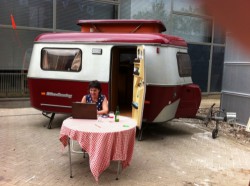
2012-07-05 11:22:30
2.
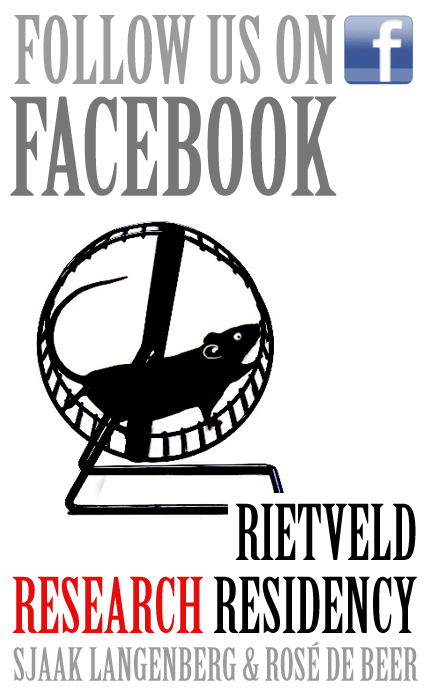
2012-06-28 08:25:17
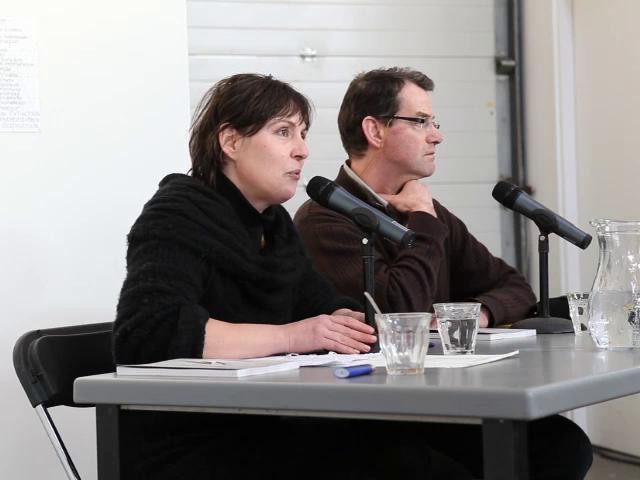
2012-05-09 15:19:09
Interview Ann Meskens with Henri Jacobs at the opening of the exhibition Surface Research and book launch



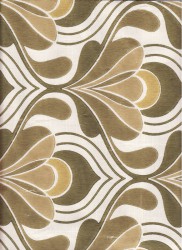

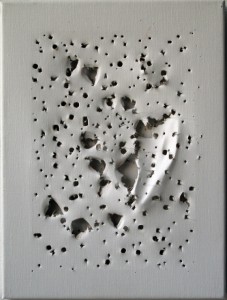
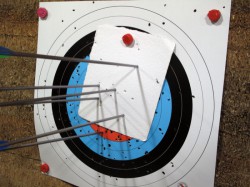
2010-10-06 09:45:09
Creative destruction by arrows shot through a sheet of natural Moulin Delarroque watercolour paper.
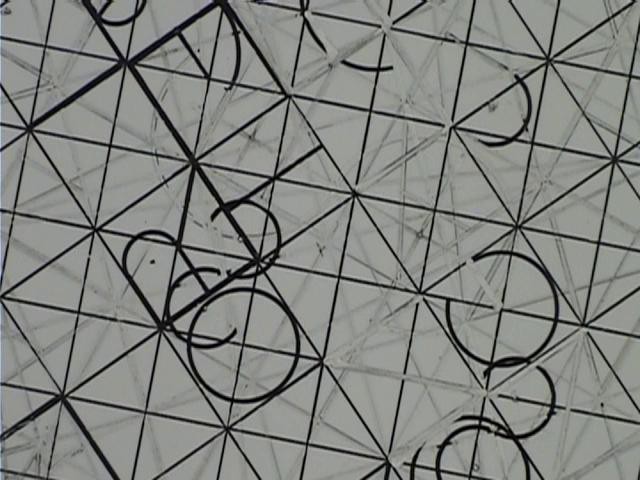
2010-09-09 14:17:25
Surface Research
reading Kleist
2011-09-12 10:05:19
Here is Belgium calling. I’m sorry I have to talk to you with the voice of Thomas, but as Kleist already knew, human beings are very imperfect, they can be sick (as marionetts cannot be.)
So. Heinrich von Kleist? Yes.
They always say: a famous German poet, dramatist, novelist and short story writer. (But for me, you could also say, a philosopher, and not the easiest one.) And let us not forget: a cultfigure.
He lived from 1777 until 1811 - so Germany as later unified under Bismarck, was still future. Kleist was born in Frankfurt and died in Berlin, and was Prussian.
Kleist had his own character, but also the times were complex. It was the beginning of the century, France had his revolution, but in Germany with a lot of different little states - with maybe only the German language as common thing - revolution draw more inwards. There was maybe to mutch and maybe to much different things: enlightment and ‘sturm und drang’, the optimism from science and technik, the machine!, but also the beginning of the feeling that man lost also something. There was a growing new Europe but also influences from America and Russia, even India. There were wars (for instance with the French) and repression and censure from within, and also the still new longing for freedom, equalty and progress...
Philosophers were arguing about politics and social things but also a lot! about knowledge, thruth, the distance between man and the things around him: look, we are human beings and there is the world, (here is the subject and there the object), how can we reach knowledge? By our reason (rationalists), by informations from our senses (empirists), maybe by both ways (like Kant said)? Also the young German Idealistic philosopers stepped in this interessing but confusing discussion. If you want, you can read a book like On Grace and dignity from Schiller. You are then really close to the Kleist-universum.
But. Why we should read Kleist today, unless you are a philosopher interested in early 19the century thinking?
First. We are often not aware that our thinking and feeling today is deep influenced from the 19th century. It was a ‘see of ideas’ and al our ‘conversations’ about, say: free market or religion, dead penalty, abortion, art, authenticity and so on fleed very often from there.
Second. Heinricht von Kleist came to early, they say, and is more modern than a lot of other later 19th century persons. It is true, in temperament and content he looks closer to us then, for instance, Goethe. (Of course, others, like Goethe and Shiller became much older, and more boring, then the for ever young Kleist.) But, his style, I have to admid, I was impressed.
Third. Kleist had a very short spectacular life. (Maybe because he embodied to much the chaos of the early 19the century). He was a soldier at fifteen (a family tic), decided at early twenty to study (a lot), science, philosophy, maths..., but he became not a scientist but instead started to write literature (plays, poems...), he travelled a lot in Europe (also triggered by ideals, for instance, he went to Suisse to become a peasant - ah, Rousseau!), he invented some things (I think also a sort of submarine?) he started a magazine and later on a newspaper in Berlin,... and so on, but at 34 he decided to kill himself (together with a sick friend - he shoot her first.)
So. But around a year for his dead, he wrote the text ‘On the puppet theatre’. Well.
I give you - as a bridge to Kris Verdonck - a short reading-experience and a few remarks. On the website from the Rietveld (under projects- in residence) I give you more information, and also on my own website. You can, for instance, find the images of the works of art mentioned in the text, or some remarks for better understanding.
Because, yes, in my opinion, you have to read this beautiful, interesting, enigmatic text.
When I read it for the first time, I was catched by the rithme and style and also the story - and the stories within the story. But I admit, at the end I could not explain about what was Kleist writing. After three times reading, I thought it was even harder to say. Who were the speaking-partners in this fictional conversation, what were they defending, what was the opinion from Kleist himself, Was it about art, about philosophy, about technics, maybe even about politics (because specially in newspapers there was a lot of censure.)
Is it al about the feeling that human beings by using their head to much, they became alone and isolated, in head of the world in stead of in the cradle of the world?
Did Kleist believe that we cannot go back, to an animal state in an animated world, but maybe there is a way forwards, to find the backdoor in Eden, by using our head more, or maybe differently?
Is maybe te bear with the rapier, the symbol of a midway, the way of an artist, who can in a sort of other understanding know more en act better?
I dont know. I am a philosopher and have more questions then before reading the text. My way is to read more, and other writers of that time, (and so I dicovered even that a famous Englisch translator made a mistake to pick up the wrong dancer (Vestris.) I let you some notes on my website that I am preparing. But if you ask me. Maybe you have to read is as a bear with a rapier?
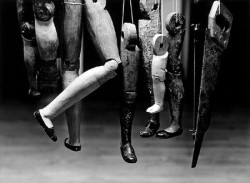
2011-09-11 21:42:58
http://sofieyamaneko.livejournal.com/48985.html
text Kleist in Englisch and images
(photo Judy de Bustamante)

